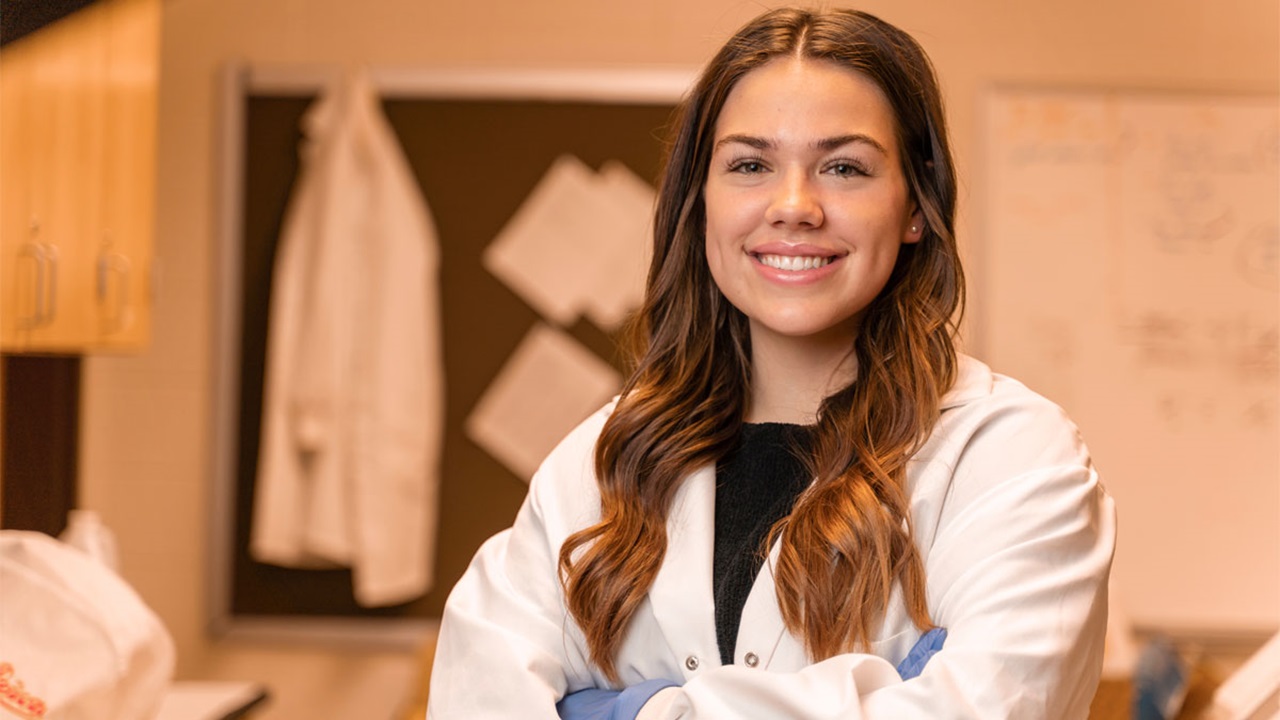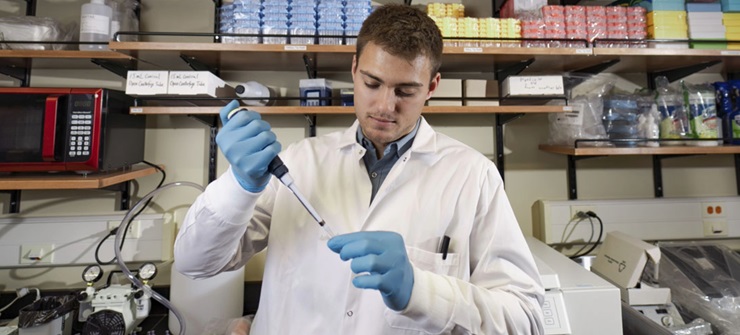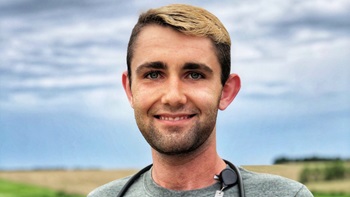Amphibian Research Makes Impact on South Dakota's Ecosystems

Emily Eisenbraun, a junior medical biology major at the University of South Dakota, directed a project to determine the relationship between prevalence of Ranavirus, bioaccumulation of selenium, and immunocompetence in amphibians in South Dakota and to determine if disease prevalence was correlated with areas of agricultural runoff in South Dakota’s prairie pothole wetlands.
“With the increasing usage of tile drainage systems and increased exposure to selenium, it is important that we understand how humans and wildlife are being affected," Eisenbraun said. “My study was one of the first to link all three aspects of toxicology and disease ecology in a system.”
Eisenbraun studied Northern Leopard Frogs, common in eastern South Dakota wetlands, because they are susceptible to Ranavirus. Intensive field sampling was conducted across five wetlands in eastern South Dakota at three control sites with no agricultural runoff and two experimental sites, where there is a direct tile drainage.
“I wanted to study something that would be applicable someday as a physician, but I also wanted to start a project that would benefit the ecosystems of South Dakota,” Eisenbraun said. “My research teaches me useful skills towards my career while allowing me to do my best to protect nature.”
The Northern Leopard Frogs were then brought back to the laboratory, where blood samples were collected and analyzed to find immunocompetence and effects of infection. USD’s Kerby Laboratory is one of the few amphibian diagnostic labs in the nation, and they have the equipment and training to run qPCR reactions to determine disease prevalence and quantity in amphibian samples. Eisenbraun is currently the undergraduate student who runs qPCR for this lab and other labs across the country.
The study has implications for hunters utilizing wetlands in South Dakota for waterfowl harvest. Eisenbraun and her group expect to find a correlation between Ranavirus in the frogs and areas of agricultural runoff in the final study results.
“This study will be useful for our understanding of the interactions of chemicals and disease, while doing so in a way that is safe to humans and meaningful to South Dakota wildlife,” Eisenbraun said.
After graduation, Eisenbraun plants to attend medical school to become a dermatologist or endocrinologist.


